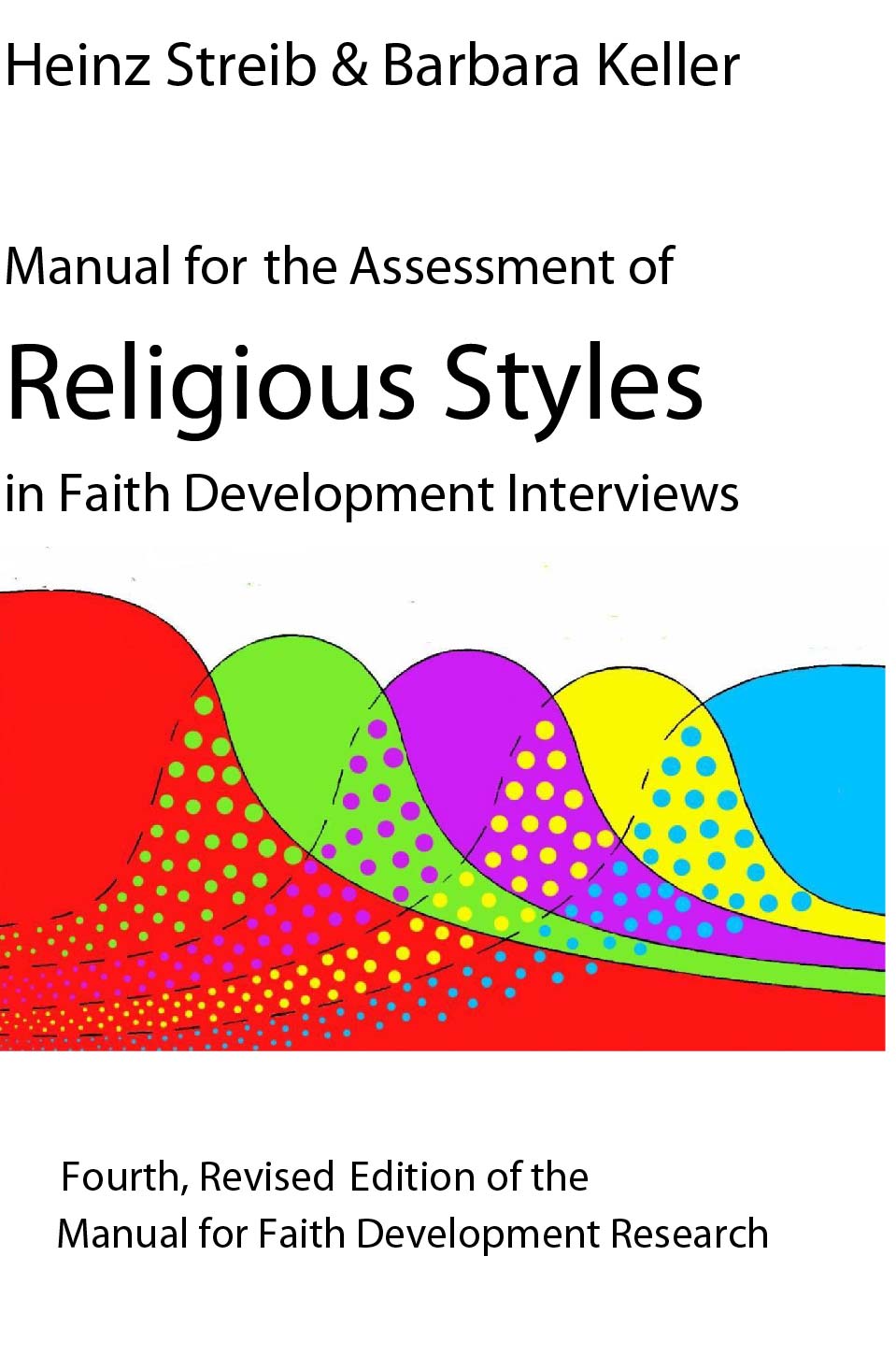Faith Development Research

Faith Development Research
Einführung und Geschichte
Das von Fowler (1981) eingeführte und so genannte Faith Development Interview (FDI) halten wir für den Königsweg zur Erfassung religiöser Stile. Denn dieses aus 25 Leitfragen bestehende Interview setzt mit einem Abschnitt zum Lebensrückblick und damit mit einer Einladung zu autobiographischer Narration ein, führt über zwei weitere Abschnitte zu Beziehungen und zu Werten & Verpflichtungen schließlich in einem letzten Abschnitt zu Fragen über Religion und Weltanschauung. Wir haben die Formulierungen dieser Interview-Fragen inzwischen immer wieder behutsam angepasst und stellen hier auf einer Downloadseite die aktuelle Version des Fragenkatalogs sowie die uns bekannten Übersetzungen in verschiedene Sprachen zur Verfügung. Das FDI wurde in den meisten unserer abgeschlossenen Projekte eingesetzt; auch findet es in unseren aktuellen Forschungsprojekten Anwendung. Wir sind laufend dabei, auch die FDI-Auswertungsmethode zu verfeinern und zu aktualisieren.
Grundlage für die strukturelle Auswertung der Interviews ist ein Manual, das 1986 erstmal erschienen ist und im Laufe der Jahre immer wieder überarbeitet und an den neuesten Forschungsstand angepasst wurde. In der dritten Auflage haben wir umfassende Änderungen vorgenommen, indem die Kodierkriterien entlang der verschiedenen Aspekte von „faith“ gruppiert wurden. Die Intention hierbei war, die Forschungsperspektive für die Unterschiede zwischen den verschiedenen Aspekten zu öffnen und der Tatsache Rechnung tragen, dass in der empirischen Arbeit verschiedene Stufen –, teilweise drei verschiedene Stufen – zugewiesen werden.
Unter dem Titel Manual for the Assessment of Religious Styles in Faith Development Interviews haben wir jetzt die vierte, vollständig überarbeitete Auflage des Manual for Faith Development Research produziert und publiziert. Diese Neuauflage nimmt Streibs Vorschlag auf, nicht von „Stufen“, sondern von „Stilen“ zu sprechen. Ebenso werden neue Entwicklungen aus den Bereichen Entwicklungs- und Religionspsychologie aufgenommen. Parallelen zur Lebensspannen-Psychologie etwa bestehen darin, dass wir Entwicklung multidimensional und multidirektional konzeptualisieren, anstatt eine unumkehrbare Abfolge festgelegter Stufen vorauszusetzen.
Anwendung und Auswertung

Das Faith Development Interview (FDI) erfordert Zeit. Ein Interview dauert 1,5 - 2 Stunden, manchmal länger. Um die Fragen adäquat stellen und auf die Antworten einfühlend eingehen zu können, erfordert es gut ausgebildete Personen, denen die potentielle Tiefe der Antworten bewusst ist. Ebenso sollten sie auch den theoretischen Hintergrund gut genug kennen, um durch geschicktes Nachfragen Antworten zu generieren, die zur strukturellen Auswertung mit dem Manual geeignet sind.
Das FDI kann nur in einer vertrauensvollen Gesprächsatmosphäre stattfinden und setzt Bedingungen voraus, die dazu einladen, über das Leben zu reflektieren und Einsichten in die eigene Gedankenwelt zu äußern.
Ist das Interview geführt und transkribiert, kann der Auswertungsprozess beginnen: Mit Hilfe des Manuals werden die Antworten strukturell interpretiert. Die einzelnen Fragen des Interviews werden dabei sechs Aspekten zugeordnet und unter diesen Aspekten interpretiert; diese Aspekte sind:
- Perspektivenübernahme
- sozialer Horizont
- Moral
- Verortung von Autorität
- Formen des Weltzusammenhangs
- Symbole und ihre Funktionen
Das Manual enthält für jeden Aspekt ausführliche Kodierkriterien, die die Zuordnung der Interview-Aussagen zu einem religiösen Stil nahelegen. Diese Zuordnung wird, zusammen mit einer Begründung, in ein so genanntes Scoring Sheet eingetragen, welches am Ende einen guten Überblick über die Verteilung der Stile im Interview gibt. Im Scoring Sheet wird eine übersichtliche Graphik produziert, die wir hier exemplarisch vorstellen.
Man kann schon alleine an dieser Graphik Tendenzen ablesen, in welchem Stil sich die untersuchte Person vornehmlich bewegt. Diese Person ist vornehmlich in den Stilen 3 und 4 zu finden.
